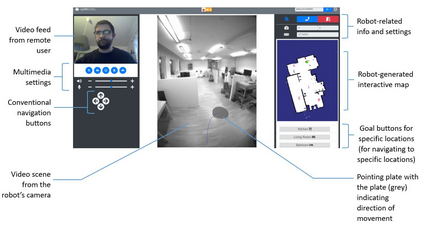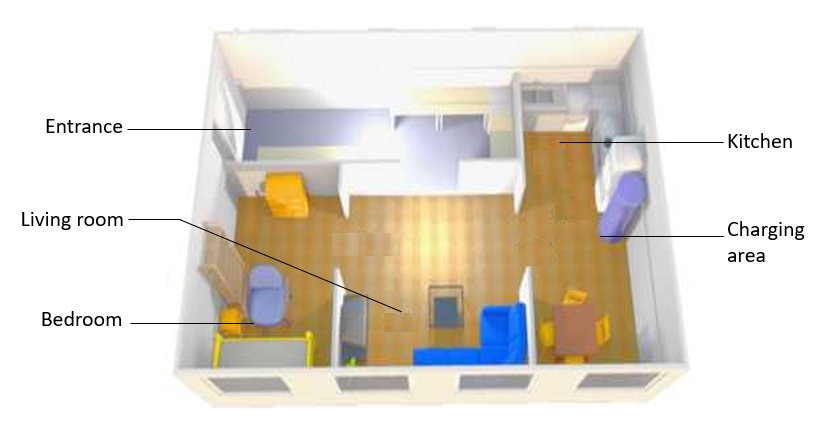Caregivers in eldercare can benefit from telepresence robots that allow them to perform a variety of tasks remotely. In order for such robots to be operated effectively and efficiently by non-technical users, it is important to examine if and how the robotic system's level of automation (LOA) impacts their performance. The objective of this work was to develop suitable LOA modes for a mobile robotic telepresence (MRP) system for eldercare and assess their influence on users' performance, workload, awareness of the environment and usability at two different levels of task complexity. For this purpose, two LOA modes were implemented on the MRP platform: assisted teleoperation (low LOA mode) and autonomous navigation (high LOA mode). The system was evaluated in a user study with 20 participants, who, in the role of the caregiver, navigated the robot through a home-like environment to perform control and perception tasks. Results revealed that performance improved in the high LOA when task complexity was low. However, when task complexity increased, lower LOA improved performance. This opposite trend was also observed in the results for workload and situation awareness. We discuss the results in terms of the LOAs' impact on users' attitude towards automation and implications on usability.
翻译:为了让非技术用户有效和高效地操作这些机器人,必须审查机器人自动化系统(LOA)水平是否和如何影响其性能。这项工作的目的是为老年人护理的移动机器人远程服务系统开发适当的LOA模式,并评估其对用户业绩、工作量、对环境的认识和在两个不同任务复杂程度的可用性的影响。为此,在MRP平台上实施了两种LOA模式:协助远程操作(低LOA模式)和自主导航(高LOA模式)。在用户研究中,对该系统进行了评价,有20名参与者,他们作为看护者,通过类似家庭的环境对机器人进行导航,以履行控制和感知任务。结果显示,任务复杂程度低时,LOA的性能有所改善。但是,任务复杂程度提高时,LOA的性能也有所下降。在工作量和情况意识方面,也观察到了这一相反的趋势。我们讨论了LOA对用户自动化的影响。我们讨论了LA的用户对自动化影响。










